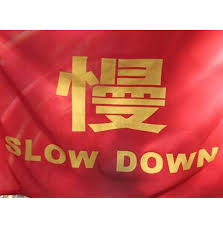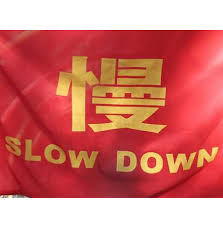
According to a Reuters poll, China's economic growth would likely fall to 5.0 percent in 2022 due to further COVID-19 outbreaks and faltering global recovery, putting more pressure on the central bank to loosen policies further.
The projected growth rate for 2022 is lower than the 5.2 per cent predicted by economists in a Reuters poll in January, implying that the government will have a difficult time meeting this year's 5.5 percent target. After that, growth is expected to accelerate to 5.2 per cent in 2023.
According to the median projections of 41 economists polled by Reuters, GDP grew 4.4 per cent in the first quarter from a year ago, beating the fourth-4.0 quarter's per cent due to a strong start in the first two months.
Analysts predict that China's efforts to contain its largest COVID outbreak since the coronavirus was first found in the city of Wuhan in late 2019 could hamper March activities.
"March activity data is likely to have seen a notable deterioration, but that would just be the tip of the iceberg as the economically damaging lockdowns only started in mid-March," analysts at Societe Generale said in a note.
"However, real GDP growth might avoid falling below 4%, thanks to the infrastructure push, the reporting methods and the surprisingly strong data seen in January and February."
According to the poll, quarterly growth is expected to drop to 0.6 per cent in the first quarter from 1.6 per cent in October-December.
On April 18, at 0200 GMT, the government will disclose first-quarter GDP figures as well as March activity data.
GDP grew reached its fastest rate in a decade in 2021, but progress slowed significantly last year, weighed down by debt difficulties in the housing sector and anti-virus efforts that harmed consumer confidence and spending.
Policymakers focused last year on reducing property and debt concerns, exacerbating the economic recession.
This year, the government has announced more economic stimulus, including an increase in municipal bond issuance to fund infrastructure projects and tax cuts for businesses.
China's cabinet said on Wednesday that it will employ timely decreases in banks' reserve requirement ratios (RRR) and other policy measures to assist the economy as headwinds mount due to COVID-19 breakouts.
According to the survey, the People's Bank of China (PBOC) would reduce the RRR - the amount of cash that banks must retain as reserves - by 50 basis points (bps) in the second quarter of 2022.
Citi economists expect a 50-basis-point cut to be announced as soon as Friday, releasing over 1.2 trillion yuan ($188.52 billion) in liquidity, according to a note, adding that while the move may reduce the likelihood of an impending medium-term lending facility rate cut, the loan prime rate (LPR) could still be lowered on April 20.
According to the poll, analysts predict the PBOC will decrease the one-year LPR, or benchmark lending rate, by 10 basis points in the second quarter.
In January, the PBOC decreased the one-year LPR by 10 basis points, and in December, it cut the RRR by 50 basis points.
According to the poll, consumer inflation would accelerate to 2.2 percent in 2022 from 0.9 per cent in 2021, before rising to 2.3 percent in 2023.
(Source:www.economictimes.com)
The projected growth rate for 2022 is lower than the 5.2 per cent predicted by economists in a Reuters poll in January, implying that the government will have a difficult time meeting this year's 5.5 percent target. After that, growth is expected to accelerate to 5.2 per cent in 2023.
According to the median projections of 41 economists polled by Reuters, GDP grew 4.4 per cent in the first quarter from a year ago, beating the fourth-4.0 quarter's per cent due to a strong start in the first two months.
Analysts predict that China's efforts to contain its largest COVID outbreak since the coronavirus was first found in the city of Wuhan in late 2019 could hamper March activities.
"March activity data is likely to have seen a notable deterioration, but that would just be the tip of the iceberg as the economically damaging lockdowns only started in mid-March," analysts at Societe Generale said in a note.
"However, real GDP growth might avoid falling below 4%, thanks to the infrastructure push, the reporting methods and the surprisingly strong data seen in January and February."
According to the poll, quarterly growth is expected to drop to 0.6 per cent in the first quarter from 1.6 per cent in October-December.
On April 18, at 0200 GMT, the government will disclose first-quarter GDP figures as well as March activity data.
GDP grew reached its fastest rate in a decade in 2021, but progress slowed significantly last year, weighed down by debt difficulties in the housing sector and anti-virus efforts that harmed consumer confidence and spending.
Policymakers focused last year on reducing property and debt concerns, exacerbating the economic recession.
This year, the government has announced more economic stimulus, including an increase in municipal bond issuance to fund infrastructure projects and tax cuts for businesses.
China's cabinet said on Wednesday that it will employ timely decreases in banks' reserve requirement ratios (RRR) and other policy measures to assist the economy as headwinds mount due to COVID-19 breakouts.
According to the survey, the People's Bank of China (PBOC) would reduce the RRR - the amount of cash that banks must retain as reserves - by 50 basis points (bps) in the second quarter of 2022.
Citi economists expect a 50-basis-point cut to be announced as soon as Friday, releasing over 1.2 trillion yuan ($188.52 billion) in liquidity, according to a note, adding that while the move may reduce the likelihood of an impending medium-term lending facility rate cut, the loan prime rate (LPR) could still be lowered on April 20.
According to the poll, analysts predict the PBOC will decrease the one-year LPR, or benchmark lending rate, by 10 basis points in the second quarter.
In January, the PBOC decreased the one-year LPR by 10 basis points, and in December, it cut the RRR by 50 basis points.
According to the poll, consumer inflation would accelerate to 2.2 percent in 2022 from 0.9 per cent in 2021, before rising to 2.3 percent in 2023.
(Source:www.economictimes.com)





